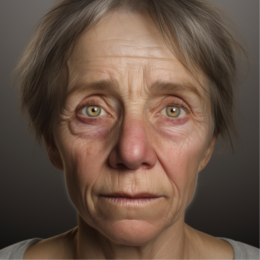Healthier Aging: Tackling 10 Most Common Chronic Diseases

The aging process is inevitable, and so seems the onslaught of chronic diseases that affect millions globally. The World Health Organization (WHO) lists chronic diseases as a leading cause of mortality, accounting for 71% of deaths worldwide. As we strive for healthier aging, understanding the most common chronic conditions, their treatments, and prevention measures can significantly improve quality of life.
10 Most Common Chronic Diseases
1. Heart Disease
Heart disease remains a global concern, accounting for approximately 32% of all deaths worldwide. These conditions include coronary artery disease, congestive heart failure, and congenital heart disease. Regular exercise, a balanced diet, and maintaining a healthy weight can drastically reduce heart disease risk.
Statistics: The American Heart Association suggests that 150 minutes of moderate aerobic activity per week can lower your risk for heart disease.
2. Cancer
Cancer is a group of diseases characterized by uncontrolled growth and spread of abnormal cells. It is the second leading cause of death globally. The diet for cancer patients can vary based on the individual and the type of cancer. Still, a diet rich in fruits, vegetables, lean proteins, and whole grains is generally recommended to support the immune system and recovery.
Statistics: A third of cancer deaths could be prevented by a nutritious diet, maintaining a healthy weight, and regular physical activity, according to WHO.
3. Chronic Respiratory Diseases
Chronic respiratory diseases, such as chronic obstructive pulmonary disease (COPD) and asthma, affect the airways and structures of the lung. Remarkably, quitting smoking and avoiding exposure to indoor and outdoor air pollutants can prevent these diseases.
Statistics: Indoor smoke from solid fuels doubles the risk of COPD, according to WHO.
4. Diabetes
Diabetes is a chronic disease that occurs when the body cannot produce enough insulin or cannot utilize insulin effectively. It’s a significant cause of blindness, kidney failure, heart attacks, stroke, and lower limb amputation.
Statistics: Type 2 diabetes, which represents 90-95% of all diabetes cases, can be prevented or delayed with lifestyle changes, like regular physical activity, a healthy diet, and maintaining normal body weight.
5. Alzheimer’s Disease
Alzheimer’s is a progressive disease that destroys memory and other crucial mental functions. It’s the most common cause of dementia, a continuous decline in thinking, behavioral and social skills.
Statistics: Engaging in regular physical activity and maintaining good cardiovascular health can reduce the risk of Alzheimer’s disease.
6. Osteoporosis
Osteoporosis causes bones to become weak and brittle, such that a fall or mild stresses like bending over or coughing can cause a fracture. As people often ask, “What are treatments for osteoporosis?” It’s important to note that while it often can be prevented with a healthy lifestyle – regular weight-bearing exercise, good nutrition including adequate calcium and Vitamin D intake, and avoidance of smoking and excessive alcohol – there are also specific medical treatments available. These include bisphosphonates, hormone-related therapy, and several others, which work to either slow or stop bone loss or rebuild bone. It’s crucial to consult with a healthcare provider to discuss these treatment options.
Statistics: Approximately 1 in 3 women over age 50 will experience osteoporotic fractures.
7. Arthritis
Arthritis, characterized by inflammation of the joints, affects about 350 million individuals globally. It manifests through symptoms like joint pain, swelling, and stiffness. The question of how to prevent arthritis is common, and the answer lies in several lifestyle measures. Regular physical activity helps maintain joint flexibility, while maintaining a healthy weight reduces the pressure on joints, preventing wear and tear. Additionally, avoiding injury and repetitive movements can help prevent the onset of arthritis. An early diagnosis, followed by an appropriate treatment plan, can also significantly manage symptoms and improve the quality of life.
Statistics: Women are more likely than men to develop most types of arthritis.
8. Stroke
A stroke occurs when the blood supply to part of your brain is interrupted or reduced, preventing brain tissue from getting oxygen and nutrients. Stroke risk factors include high blood pressure, smoking, diabetes, and high cholesterol. Control of these risk factors can prevent strokes.
Statistics: Nearly 80% of strokes can be prevented by healthy lifestyle changes, such as maintaining a healthy diet, physical activity, and quitting smoking.
9. Chronic Kidney Disease
Chronic kidney disease (CKD) is a type of kidney disease in which there is a gradual loss of kidney function over a period of months or years. CKD often goes undetected and undiagnosed until the disease is advanced and kidney function is severely impaired.
Statistics: CKD progresses slowly, and early detection and treatment can often keep CKD from worsening.
10. Depression
Depression is a common mental disorder that negatively affects how you feel, the way you think, and how you act. Signs of depression are feelings of sadness and/or a loss of interest in activities once enjoyed. Treatment typically includes psychotherapy, medication, or a combination of both.
Statistics: More women are affected by depression than men worldwide.

Conclusion
The rising prevalence of chronic diseases presents a profound challenge, but it also underscores the importance of prevention and effective management. By broadening our understanding of these health conditions and adopting healthier habits, we can foster healthier aging for ourselves and future generations.
References:
- American Heart Association. (2019). New guidelines: Healthy lifestyle, managing risks are key to preventing heart attack, stroke.
- Alzheimer’s Association. (2023). Alzheimer’s Disease Facts and Figures.
- Arthritis Foundation. (2019). Arthritis By The Numbers.
- International Diabetes Federation. IDF Diabetes Atlas.
- International Osteoporosis Foundation. (2023). Facts and Statistics.
- National Cancer Institute. (2023). Cancer Treatment.
- World Health Organization. (2023). Chronic Diseases and Health Promotion.
- World Health Organization. (2023). Depression: A Global Public Health Concern.





